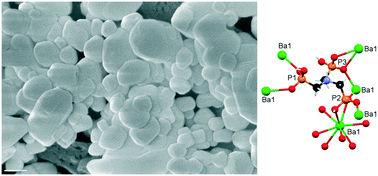Recalcitrant barium sulfate (BaSO4) scale deposits are commonly encountered in industrial applications. They are hard to remove because of the pH-independence of their solubility. The formation of BaSO4 from supersaturated solutions was studied in two series of experiments: (a) the first series was performed under conditions of high supersaturation to determine the domain of stability of the system and (b) the second at low supersaturations, under conditions in which the supersaturated solutions were stable (seeded growth experiments). From the first series, the stability diagram of the system was determined. Through the second series of precipitation experiments, the effect of two types of triphosphonic acid additives on BaSO4 formation was assessed: the rigid aromatic 1,3,5-benzenetriphosphonic acid (BTP) and the flexible aliphatic amino-tris(methylenephosphonic) acid (AMP). Initially, the pH of the solutions was adjusted at 9.5 so that all phosphonate groups were deprotonated. For both additives, the rate of crystal growth of BaSO4 was inhibited. At low pH (3.60) a decrease of the rate of crystal growth with increasing additive concentrations was found. At pH 9.50 however, an irregular trend was observed showing a relative increase of the rates of crystal growth with increasing inhibitor concentration. These inconsistencies were attributed to changes of the solubility of BaSO4 in the presence of additives. The solubility changes in the presence of each test additive were quantified by measuring the apparent solubility of BaSO4 seed crystals. The measurements showed that the changes were negligible at pH 3.60. Kinetics measurements in the presence of the test additives suggested that their adsorption on the BaSO4 seed crystals was responsible for the inhibition. Modelling the adsorption according to the Freundlich isotherm gave a satisfactory fit of the kinetics data in the presence of BTP and AMP at pH 9.50. The presence of the test additives at both pH values did not affect the morphology of the growing BaSO4 crystals.
